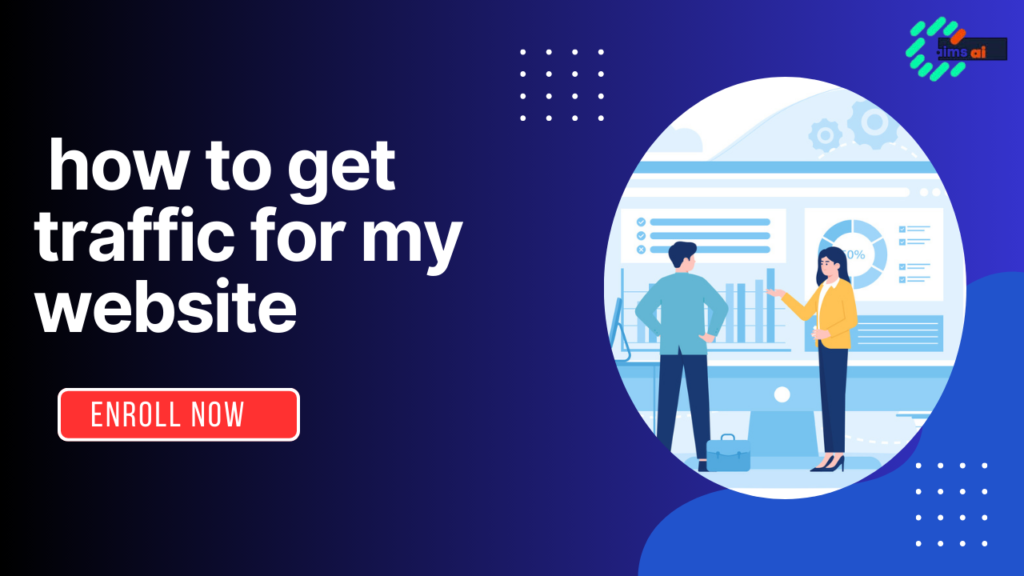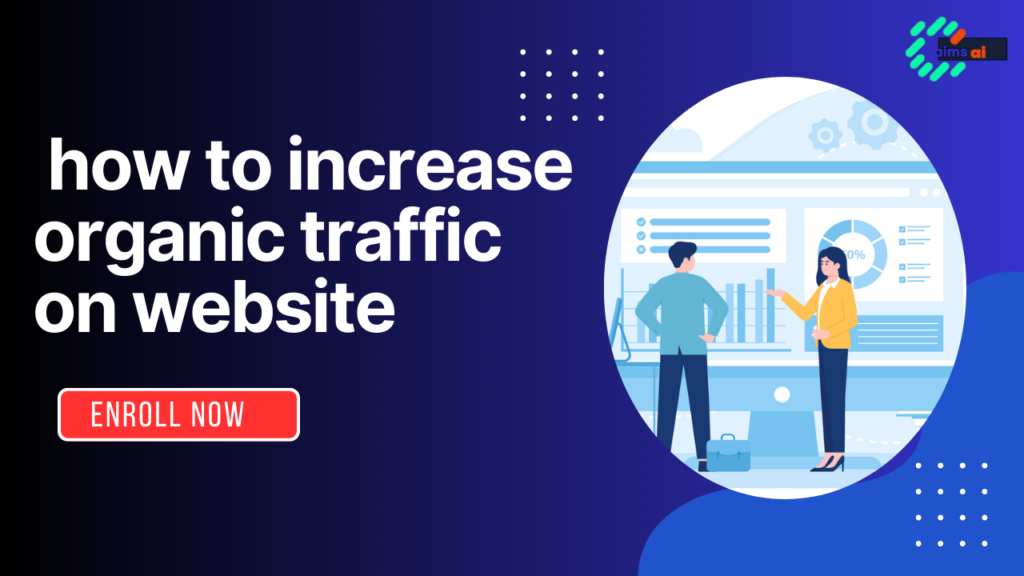How to Get Traffic for Your Website: Proven SEO Strategies for Success
As the owner of a website, you are probably pondering over how to increase visibility across different search engine results. Even the most well-designed websites with the best crafted content require traffic to work, and without any traffic, nothing will get delivered. Worry not, experts suggest with efficient SEO strategies high quality traffic can be obtained and reach can be expanded. Getting greater focus on the site enables business owners, bloggers and content creators to work with ease.
This article will discuss how you can optimize your website to pull in more visitors and raise your content’s visibility. You can use these techniques to improve engagement, attract visitors and increase conversion rates.
1. Perform Comprehensive Keyword Research
To begin an effective SEO strategy, keyword research is critical as a first step. Targeting the appropriate keywords is imperative as it drives traffic, and people are constantly searching for specific terms and phrases. When your website ranks for high-volume keywords, the likelihood of appearing on search engine results pages triples.
Guidelines for Conducting Keyword Research:
Employ Difference Strategies: Utilize frameworks such as Google Keyword Planner, SEMrush and Ahrefs or moos to source relative keywords for your industry.
Pay Attention to Long Tail Keywords: Long tail keywords are often more particular and less intensely contended, which means they can help aid in climbing higher ranks quicker. For instance, instead of attempting to target a general keyword such as ‘marketing,’ hone in your focus to ‘strategies for marketing a small business’ and see the difference.
Evaluate Search Intent: Grasp what lies behind a user’s search (informational, commercial, and navigational) and formulate content that serves such functions.
When guiding content with keyword research, it makes it more probable to receive organic traffic.
2. Modify Contet For SEO Optimization
On-page SEO is described as the customization of certain web pages in order to get a higher position in the search engine results. Well SEO optimized content increases the understanding of the page by the search engine and at the same time improve the relevance of the page to users, which motivate the users to click on the page more.
Strategies To Optimize SEO Content:
Title Tags: One of the most important factor for ranking in SEO is the Title tag. Make sure the title portion of the image has the targeted keyword and it is captivating enough to be clicked on.
Meta Descriptions: Provide a brief overview of the content, incorporating keywords within the bloom of phrases. While not fundamentally impacting search rankings, it still has the potential to enhance click-through rates.
Header Tags: Incorporate H1, H2, and H3 tags to deconstruct the content and assist the audience in browsing through your page. These facilitate engines to recognize what primary subjects you are discussing in your content, as well.
Keyword Placement: Ensure to incorporate your main target keyword and its corresponding phrases (LSI keywords) skillfully throughout the text, especially in the first 100 words, headings and image description sections.
Content Length: Not only does longer content aids in better performance on the Search Engines, it also allows a more detailed discussion of the issue. Strive for a minimum of 1 thousand words of richly informative and thought provoking discourse.
Real-time example: Let’s say the topic is “how to increase website traffic”. Primary keyword must be placed within the title and subheadings as well as keywords to be placed throughout the body of the content. Related phrases such as “SEO”, “Content Marketing”, and “Backlinks” can be used to increase the optimization of the article.
3. Boost Website Speed and Mobile Functionality
User experience (UX) needs to be considered when it comes to SEO. If you have a slow-loading website that is not working well on mobile phones, you stand to lose a lot of traffic as well as your rankings. Google has been shifting towards mobile-first indexing which means your website needs to be mobile friendly in order to rank well. Moreover, if your site loads quickly, it is also placed higher up the search engine rankings.
Ways To Improve Site Speed And Mobile Optimization:
Compress Images: When you have large image files, they tend to load slowly. Use services like TinyPNG to compress your images without losing quality.
Leverage Browser Caching: You can cache static files as they will enable faster load times for pages when return visitors access them.
Use a Content Delivery Network (CDN): A CDN enables you to host your website on multiple servers all around the globe which lowers loading times as it fetches content from the server closest to the user.
Mobile Responsiveness: Use responsive designs to ensure that your site is visually appealing and usable from smaller devices. Google places more value on sites that are mobile friendly.
Real life example: A slow-loading eCommerce website that takes more than 3 seconds to load will lose a great deal of potential customers due to the high rate of bounce. Improving speed can greatly reduce bounce rates and improve conversions.
4. Increase the Number of Quality Backlinks
Inbound links, or backlinks, are perhaps the most critcial constituent of Search Engine Optimization (SEO). A website link from high authority site evidences to search engines that a certain piece of content is useful and credible. It takes a long time to build backlinks, but it is an important strategy to use for increasing organic traffic over time.
How to Build Backlinks:
Guest Blogging: Write articles for well known blogs and place a link to your website in the author bio or within the content itself.
Broken Link Building: Find broken links on other websites and replace them with your content.
Content Outreach: Get in contact with influencers or bloggers within your niche and request them to link your content to their audience if your content is valuable.
Skyscraper Technique: Do the reverse of the sub-techniques; find high ranked poor quality content, and create high quality versions in your niche. Then link back to the content and encourage people to use your versions.
Real-time example: If you created a guide on “how to build a successful online business,” you can approach websites and blogs that talk about these topics and offer them your guide as a valuable resource.
5. Social Media Marketing
Although social media in no way impacts SEO rankings, it is invaluable for website traffic. Posting content across many social media platforms allows users to see it, which increases the chances of getting backlinks and social signals that will aid your SEO indirectly.
How to Use Social Media Marketing
Schedule Your Shares: You should promote your blog posts, articles, and other relevant updates on social media as often as possible on Facebook, Twitter, LinkedIn, Instagram, and others. Each platform has its own style, so your posts will need to be adjusted accordingly.
Interact with Your Followers: Build a loyal community by responding to commenters, asking questions, or simply participating in discussions.
Leverage Hashtags: Using hashtags makes content more convenient to find. Find out what the most popular hashtags relevant to your niche are and use them to promote your content to a wider audience.
Run Contests or Giveaways: Campaigns such as these often incentivize sharing, thus boosting traffic.
Real-life example: A fitness coach can post workout tips, and success stories of their clients where they provide a link to their blog or coaching services. These postings drive traffic to their website.
6. Concentrate on Local SEO
To appeal to visitors within a specific geographic area, serve local markets and optimize your site for local SEO. This type of SEO ensures that your business comes up in local searches made for products or services that are offered by your business.
How To Optimize For Local SEO:
Claim Google My Business Listing: For applicable businesses, ensure that your business information is accurately represented in Google’s local search directory for the business name, address, phone number, and website.
Local Keywords: Make use of keywords that relate to particular geographic locations. Consider phrases such as, “best pizza in San Francisco,” or, “web design services in Miami.”
Get Local Reviews: Get customers who are satisfied with your services to review your business on Google, Yelp, or any other review site. Positive reviews improve trust and visibility.
Real time example: A plumber in New York City will create a Google My Business profile as well as optimize their site with “best plumber in NYC” keywords, thus improving chances of showing up when the audience is looking for plumbing services.
Conclusion
SEO and content marketing are critical for driving traffic to a website. Implementing strategies outlined in this article, including social media optimization, building backlinks, site speed enhancement, keyword analysis, and on-page SEO, will improve website traffic and search engine rankings over time.
Which strategy do you want to elaborate further? I’m here if you need assistance with specific SEO strategies to increase traffic to your website.

